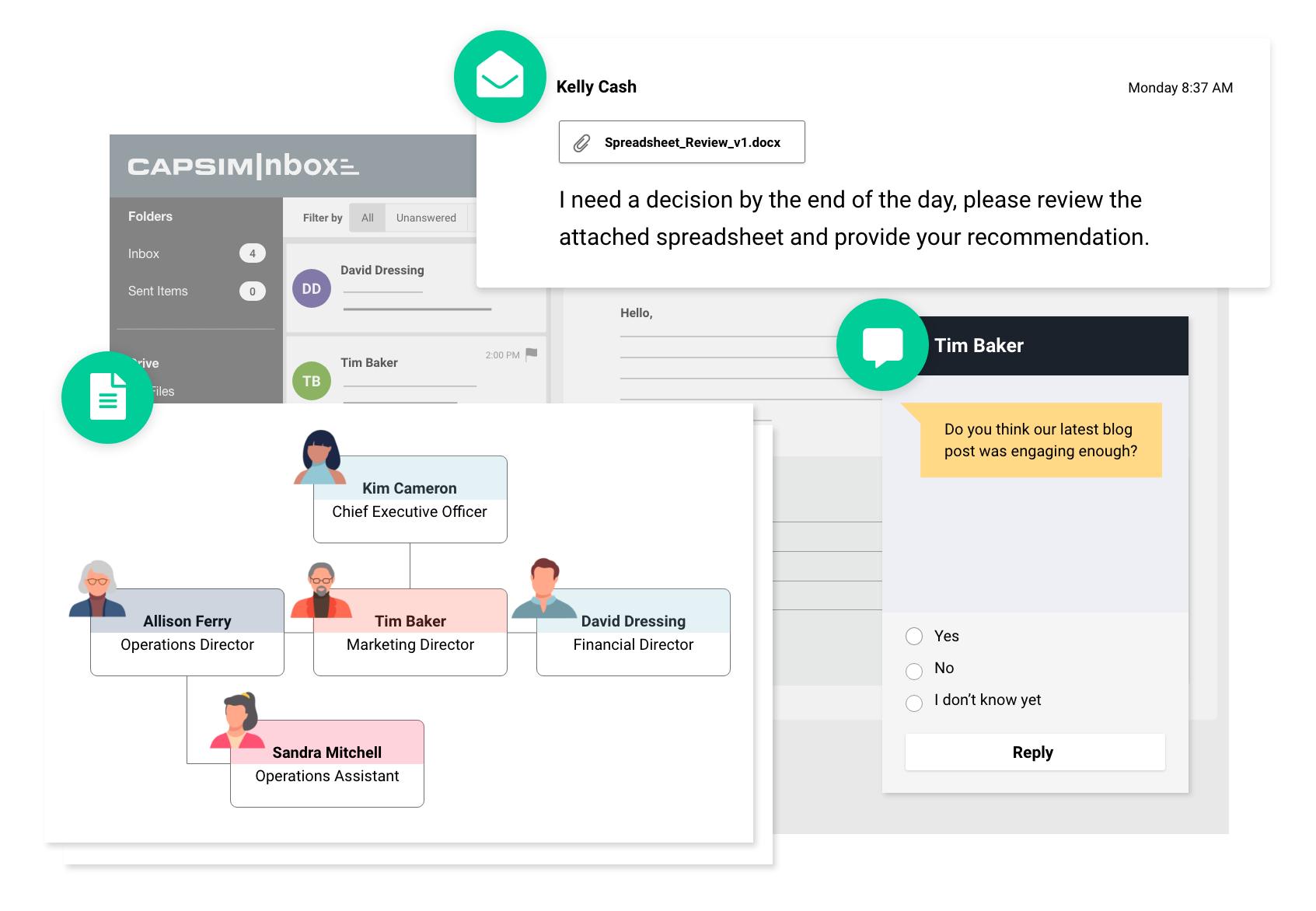The 6 Vital Soft Skill Training Topics Your L&D Program Must Cover
September 1, 2021

Your L&D program may be incomplete.
Without addressing specific soft skill training topics in your L&D program, your employees will end up missing the crucial training they need. There are two steps to prevent that from happening in your company.
The first step is finding which in-demand soft skill training topics are missing from your L&D program. The second is figuring out the most effective way to deliver that must-have information to your employees.
Let’s discuss which soft skill training topics are essential to include in your L&D program and helpful strategies for delivery and implementation. By the end of this article, you’ll be able to fill in the gaps for your L&D program and help your employees improve their soft skills.
6 Soft Skill Training Topics Your L&D Program Should Include
Soft skill development is incredibly valuable company-wide because of the beneficial effects on employee performance, productivity, and client relations.
Recent studies have shown that companies implementing soft skill training show over 14 percent improvement in employee performance and a 12 percent increase in productivity. Client relations are also affected because poor communication is the root cause of 60 percent of business issues.
We’ve seen the positive impact when your team continuously improves their soft skills firsthand. Let’s review the soft skill training topics that will impact your business the most and what is necessary to include in your next L&D program.
1. Critical Thinking and Problem Solving
Improved decision-making and increased productivity are two of the many benefits of improving your critical thinking and problem-solving skills.
As soft skills go, critical thinking and problem-solving have a lot in common. These skills give your employees more freedom and confidence in their own choices. Critical thinking and problem-solving also help your employees embrace and welcome new challenges.
For example, the average employee will find themselves constantly asking for help or not solving problems on their own. When improving your critical thinking and problem-solving skills, the goal is to have your employees come up with solutions on the fly and feel confident doing so.
Problem-solving and critical thinking are the rarest to find but are in high demand. You can solve this shortage by providing your employees more learning opportunities that apply to their real world. For example:
- A marketing manager needs to prioritize their initiatives while being challenged by budget cuts or time constraints.
- A client success representative is faced with a unique, out-of-the-norm situation from a client.
- An operations manager is asked to rapidly create and scale a new process for delivering an innovative service to clients.
2. Leadership Skills
A common mistake in soft skill development is solely focusing on employee learning and excluding management and leadership. When soft skill development isn’t coming from the top down, your company may see little effect on the overall company culture. Creating a motivating environment for learning and professional development is crucial. This company culture shift starts with consistency from leadership.
Recent studies also show how vital managerial soft skill development is and the snowball effect that it has. According to the Harvard Business Review, over 65% of managers are uncomfortable communicating with their team members. This breakdown of communication is one of the many skills lacking in management.
This skill gap is especially evident in MBA graduates. As reported by the Graduate Management Admission Council, MBA graduates lack strategic thinking, written and verbal communication, leadership skills, and the ability to adapt. Conversely, the same MBA graduates excelled in analytical skills, quantitative skills, and key problem-solving skills.
Many companies use simulations to identify, assess, and develop leadership skills in future leaders, including team leads, managers, senior team members, and more. Let’s take a real-world example of what leadership skills would look like for your team.
Let's say you have a manager on your team who is excellent with analytical work and quantitative projects. He lightly manages two employees who are based in quantitative work as well and rarely need any intervention.
Recently, this manager has been asked to take on more client work and project management, which requires him to work independently with team members in other departments and clients serviced by his department.
After one month of transitioning this new responsibility onto his plate, the team members he’s managing are running into miscommunication issues. There have been several minor misunderstandings with the clients he’s servicing as well.
This instance put leadership skills--specifically communication and adaptability--would come into play. Working on particular leadership skills day-by-day, this manager is able to make progress with his team members and clients.
Including leadership development in your L&D program, ensures your current leadership stays consistent with continuous improvement.
3. Interpersonal Skills
Interpersonal skills — listening, teamwork, dependability, adaptability, emotional intelligence, and empathy — are essential for starting and maintaining functional workplace relationships.
When working with clients or co-workers fostering positive relationships benefits your company across the board. A majority of recruiters report that interpersonal skills are increasingly important and will be in demand within the next five years, especially with the rise of remote work.
Your team may have several new team members who have recently gone through years of post-collegiate education. Although their education is valuable to your team, they lack on-the-job experience in problem-solving. But there's a gap when it comes to dealing with realistic workplace scenarios.
A company-wide soft skills training program includes a self-assessment and a recurring skill assessment. These particular employees scored themselves very high on their problem-solving self-assessment, but their scores didn’t match up to what their actual skill assessment showed.
After working on their soft skill development, these team members showed monumental improvement in the skills they were developing and their self-awareness. Some team members even improved their teamwork skills by working with their team members who were struggling.
Interpersonal skills affect every aspect of your business, from the first impressions to networking and project management fluidity. The more your team gets along and the less conflict your team has, the more smoothly your processes and projects run. Interpersonal skills also impact your networking, client, and prospect interactions, directly affecting your company’s sales progress.
4. Communication Skills
We’re more connected than ever. From messaging apps and instant messages to email and social media, communication is faster and happens across more channels than in decades past. Despite this, many workplace issues can be attributed to the lack of quality internal and external communication.
A whopping 92% of team members surveyed report they often have to repeat information to two or more people within their company. Not only does this problem affect productivity, but it can be incredibly frustrating to have to repeat information.
This communication problem also affects your clients and customers. Over 95% of customers and clients surveyed report their businesses could improve their communication and project management.
Addressing communication in your L&D program is crucial to improving the fluidity of your internal and external communication and improving your clients’ interactions with your company.
"Communication" is a large umbrella, so what aspects do you need to focus on? Indeed cited the following as the top communication skills for employees to improve:
- Active listening
- Assessing the best communication method
- Communicating with friendliness and approachability
- Projecting confidence
- Effective feedback sharing
- Being clear and concise
- Communicating with empathy and respect
- Reading non-verbal cues
- Responding within an appropriate period
Communication seems so basic. So what’s stopping every company from bulging with skilled communicators? The methods they choose to work on communication skills.
Many companies opt-in for a two-hour seminar on communication as an entire concept as their soft skills training, which ends up being ineffective. What's missing that would make developing communication skills more effective?
Pairing real workplace scenarios with short, game-like learning tools like simulations is more engaging, relevant, and can boost the progress of your employee's experience and the effectiveness of your communication skills training.
5. Adaptability Skills
Adaptability is one of the top five soft skills in demand. This is no surprise considering adaptability relates to almost every situation in the workplace.
Being adaptable and flexible to new situations affects every aspect of your workplace interactions. Let’s say in an online meeting a potential client asks an employee, “How does your service compare to others in the market?”
If the employee is adaptable they will be able to deliver a strategic answer on the spot that takes into account what they know about the prospect's needs and seamlessly meshes that with primary selling points. Alternatively, if you haven’t prepared for that answer and you’re stuck with the pre-planned answers you had for this meeting, this one answer could derail the momentum of your whole meeting.
Being inflexible or unadaptable negatively affects your team’s ability to respond to change. When your team members cannot adapt to new situations, they will find themselves asking for help frequently and needing more hand-holding than their counterparts.
Given the pace of innovation and change, as well as the rising importance of change management in organizations, adaptability is essential to your company's chances of success.
6. Time Management and Organization Skills
Managing your time and organizing work efficiently is a vital skill. However, only 20% of employees feel their work is under control every day. Although project management software helps with effective time management and organization, your team members must possess those skills independently as well.
Real-world scenarios test time management and organizational skill development. In your L&D program, you can include questions specific to real scenarios that your team members will inevitably encounter.
Take this scenario as an example:
An employee has a two-month-long project coming to an end this week, and it’s very high stakes. The team is finishing the prep for the final report to present the project results in two days.
Their manager sends them a last-minute request from a high-priority client to edit one of their previous projects. That last-minute request will take several hours to complete, and they have only two days left in the week. Their team is occupied with finishing up this two-month-long project, and they still have a handful of tasks left to wrap up.
How do they navigate this situation? What is the best course of action to prevent this from happening moving forward?
This type of question is a perfect example of a real-world scenario that your team may run into on the job. CapsimInbox, our soft skill assessment tool, immerses participants into real-world scenarios applicable to daily life on the job.
Essential Soft Skill Training Put into Practice
Soft skill training can determine the success or inefficiency of your organization. With the rapid innovation in technology and parity in products, it's more important than ever to make soft skills your competitive advantage.
Using CapsimInbox as one of your L&D training tools is an impactful step in the right direction.
The best way to get an inside look into what a soft skill training program would look like for your business is to see what’s inside. Check out our CapsimInbox self-guided demo to see precisely what effective soft skill training could look like for your company.





.png?width=80&name=1-questions%20(1).png)